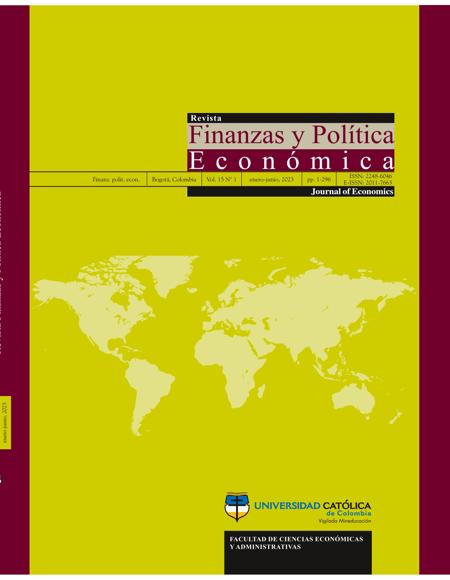
This work is licensed under a Creative Commons Attribution-NonCommercial-ShareAlike 4.0 International License.
This journal is licensed by a Creative Commons Attribution License (CC BY-NC-SA 4.0) Attribution-Non Commercial 4.0 International. For the CC licenses, the principle isthe creative freedom. This system complements the copyright without opposing it, conscious of its importance in our culture. The content of the articles is the responsibility of each author, and does not compromise in any way, to the journal or the university. It allows the transmission and reproduction of titles, abstracts and full content, with academic, scientific, cultural ends, provided acknowledgment of the respective source. This work cannot be used for commercial purposes.
They journal does not charge authors for submission or publication.
Abstract
The COVID-19 pandemic has greatly shaken the cultural industries. Researchers report significant financial and job losses worldwide for these industries. Much of the research on the pandemic and the cultural industries has focused on large cities. The objective of this research is to understand the impact of the pandemic on regional cultural industries. We studied the Outaouais region in Canada by conducting focus groups and semi-structured interviews with artists and cultural workers. Our results report on the problems caused by the pandemic, the spin-offs it has generated, the initiatives that have emerged and the role of cultural organizations during the pandemic. This research contributes to the advancement of knowledge by describing the situation of cultural industries in a regional context during the pandemic. The results of this research encourage the maintenance of certain activities in virtual or hybrid mode, the development of grant programs to attract artists to the region, and the development of events or platforms to promote networking between artists and
cultural organizations.

References
Anderson, N., Potočnik, K., & Zhou, J. (2014). Innovation and Creativity in Organizations. Journal of Management, 40(5), 1297-1333. doi:10.1177/0149206314527128
Banks, M. (2020). The work of culture and C-19. European Journal of Cultural Studies, 0(0), 1-7. doi:10.1177/1367549420924687
Beirne, M., Jennings, M., & Knight, S. (2017). Autonomy and resilience in cultural work: looking beyond the ‘creative industries’. Journal for Cultural Research, 21(2), 204-221. doi:10.1080/14797585.2016.1275311
Brinkmann, S., & Kvale, S. (2015). InterViews : learning the craft of qualitative research interviewing (3rd ed.). Los Angeles: Sage Publications.
Bryman, A., & Bell, E. (2015). Business research methods (4th ed.). Cambridge, United Kingdom: Oxford University Press.
Chapain, C., & Comunian, R. (2010). Enabling and Inhibiting the Creative Economy: The Role of the Local and Regional Dimensions in England. Regional Studies, 44(6), 717. doi:http://dx.doi.org/10.1080/00343400903107728
Comité permanent du patrimoine canadien. (2021). Les effets de la pandémie de la COVID-19 sur les secteurs des arts, de la culture, du patrimoine et du sport. Retrieved from https://www.noscommunes.ca/DocumentViewer/fr/43-2/CHPC/rapport-4
Comunian, R., & England, L. (2020). Creative and cultural work without filters: Covid-19 and exposed precarity in the creative economy. Cultural Trends, 1-17. doi:10.1080/09548963.2020.1770577
de Peuter, G. (2011). Creative Economy and Labor Precarity:A Contested Convergence. Journal of Communication Inquiry, 35(4), 417-425. doi:10.1177/0196859911416362
De Propris, L. (2013). How are creative industries weathering the crisis? Cambridge Journal of Regions, Economy and Society, 6(1), 23-35. doi:10.1093/cjres/rss025
Eikhof, D. R., & Warhurst, C. (2013). The promised land? Why social inequalities are systemic in the creative industries. Employee Relations, 35(5), 495-508. doi:http://dx.doi.org/10.1108/ER-08-2012-0061
Fendt, J., & Kaminska-Labbé, R. (2011). Relevance and creativity through design-driven action research: Introducing pragmatic adequacy. European Management Journal, 29(3), 217-233. doi:https://doi.org/10.1016/j.emj.2010.10.004
Gallant, L. (2021). Pour un milieu culturel mis à mal, la relance sera « lente et pleine de défis ». Retrieved from https://ici.radio-canada.ca/nouvelle/1760509/culture-impact-pandemie-confinement-est-quebec-roseq-bsl
Guba, E. G., & Lincoln, Y. S. (1994). Competing paradigms in qualitative research In N. K. Denzin & Y. S. Lincoln (Eds.), Handbook of Qualitative Research (pp. 105-117). Thousand Oaks: Sage Publications.
Gupta, S., & Gupta, A.-Y. (2022). “Resilience” as a policy keyword: Arts Council England and austerity. Policy Studies, 43(2), 279-295. doi:10.1080/01442872.2019.1645325
Laurin, F. (2020). Enquête sur les impacts économiques sectoriels de la crise de la COVID- 19 - Impact par secteur d’activité: Institut de recherche sur les PME (INRPME), Fédération des chambres de commerce du Québec (FCCQ). Retrieved from https://www1.fccq.ca/wp-content/uploads/2020/05/Analyse-des-impacts-re%CC%81gionaux-de-la-crise-de-la-COVID.pdf
Laurin, F., & Nicholls, W. (2021). Enquête sur les impacts de la crise de la COVID-19 sur le secteur des arts et de la culture et la transformation des organisations culturelles Retrieved from Trois-Rivières: https://synapsec.ca/wp-content/uploads/2021/08/Enquete-sur-les-impacts-de-la-crise-de-la-COVID-19-sur-le-secteur-des-arts-et-de-la-culture-et-la-transformation-des-organisations-
culturelles.pdf
Miles, M. B., Huberman, A. M., & Saldaña, J. (2020). Qualitative data analysis : a methods sourcebook (Fourth edition. ed.). Los Angeles: SAGE.
Mossig, I. (2011). Regional Employment Growth in the Cultural and Creative Industries in Germany 2003-2008. European Planning Studies, 19(6), 957.
Patton, M. Q. (2015). Qualitative research & evaluation methods : integrating theory and practice (4th ed.). Los Angeles: SAGE.
Potts, J., Cunningham, S., Hartley, J., & Ormerod, P. (2008). Social network markets: a new definition of the creative industries. Journal of Cultural Economics, 32(3), 167-185. doi:http://dx.doi.org/10.1007/s10824-008-9066-y
Pratt, A. C. (2017). Beyond resilience: learning from the cultural economy. European Planning Studies, 25(1), 127-139. doi:10.1080/09654313.2016.1272549
Révészová, Z., Barbora Andor, T., & Šebová, M. (2021). The Response of Cultural Policies in COVID-19 Pandemic in Slovakia. Scientific Papers of the University of Pardubice. Series D. Faculty of Economics and Administration, 29(1). doi:https://doi.org/10.46585/sp29011245
Robinson, M. (2010). Making Adaptive Resilience Real. Retrieved from London, England: https://www.culturehive.co.uk/wp-content/uploads/2020/10/Making-adaptive-resilience-real-1.pdf
Schwandt, T. A. (2015). The SAGE dictionary of qualitative inquiry (Fourth edition. ed.). Los Angeles: SAGE.
Waite, L. (2009). A Place and Space for a Critical Geography of Precarity? Geography Compass, 3(1), 412-433. doi:https://doi.org/10.1111/j.1749-8198.2008.00184.x
Wall-Andrews, C., Walker, E., & Cukier, W. (2021). Support Mechanisms for Canada’s Cultural and Creative Sectors during COVID-19. Journal of Risk and Financial Management, 14(12), 595. doi:https://doi.org/10.3390/jrfm14120595





























